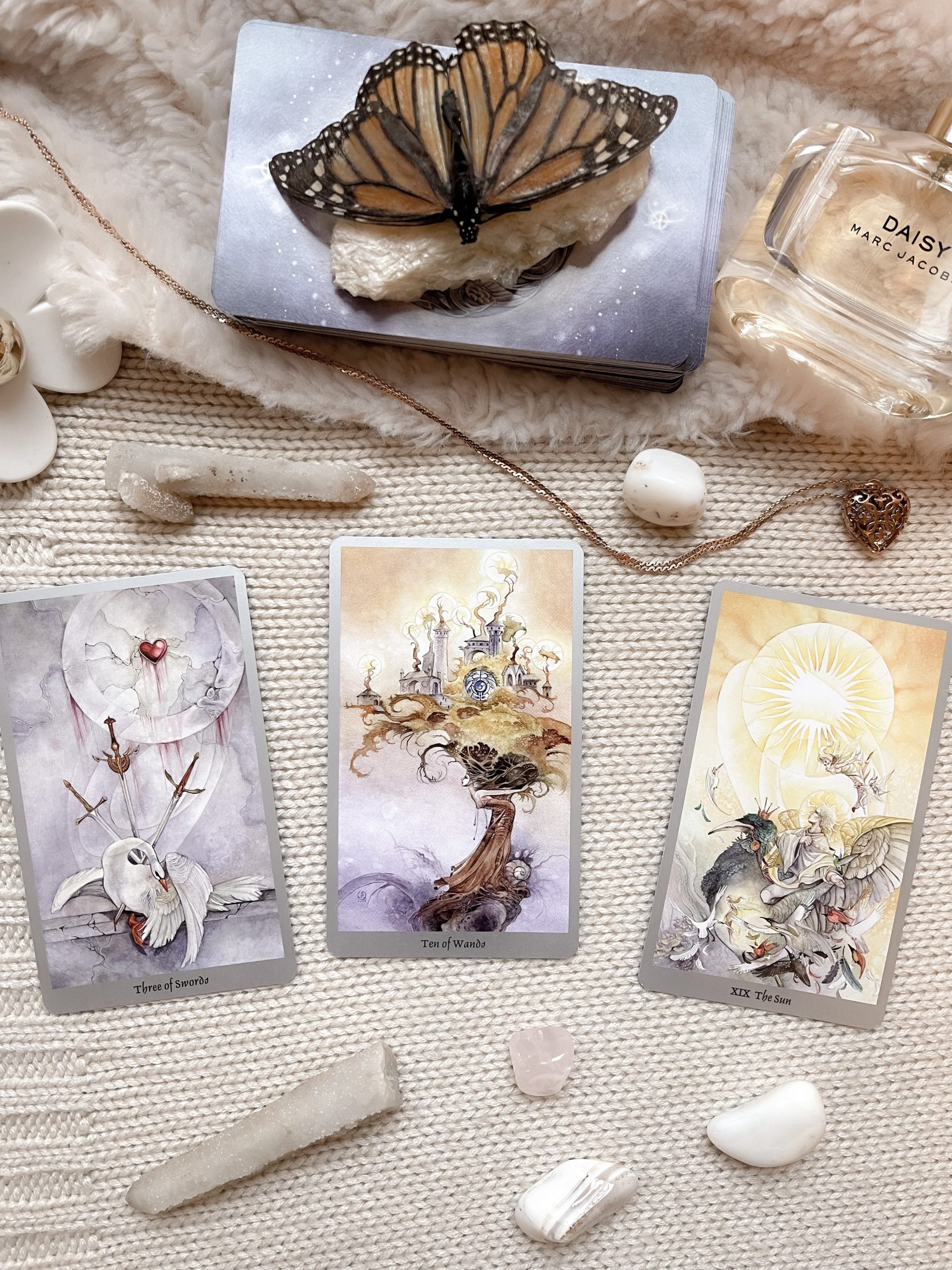There are so many tarot card spreads available to use for reading Tarot cards. In order to read the cards effectively you have to be familiar with their meanings and how you relate to them when they are in a spread. Once you get accustomed to each card on its own, you are ready to start learning how to read them in a spread. Most Tarot Card readers are familiar with the Celtic Cross Spread, but a three card basic spread is a good way to learn how to read cards for beginners.
Even before you start to use a three card spread; there is a good exercise you can do daily. Its purpose is to familiarize yourself with the cards and the idea of reading them. It is easy to do and will strengthen your abilities when it comes to reading cards in general.
What you do is you shuffle your cards and pull one a day to see what your day will be like. Based on the card you pull you give yourself a reading with that card. Analyze what that card will mean to you that day. This is an excellent way to get familiar with the cards and their meanings. It also helps you develop your sense of intuition which is also very important for reading the Tarot Deck.
Now that you know that, let’s move on to the Three Card Spread.
Here are the Steps to conduct a Three Card Reading:
- Focus on Your Question
- Shuffle Your Cards
- Pick one of the Cards and put it in the center of the table. This card represents the “present situation” in relation to the question you asked.
- You will then pick another card and lay it to the left of the first card. This is the past in relation to the question you asked. Keep in mind the past could be the day before or even the night before. It doesn’t mean years ago necessarily based on what you asked. This card connects you to the present situation or middle card.
- Next Pick your third card and lay it to the right of the middle card. This is the future or outcome position to the question. Keep in mind that the future could mean later that day. It doesn’t necessarily mean a year from now.
And there you have it! You just did a reading. Simple and to the point. When you get to the point that this is easy for you, you can begin to explore more complex types of spreads.


